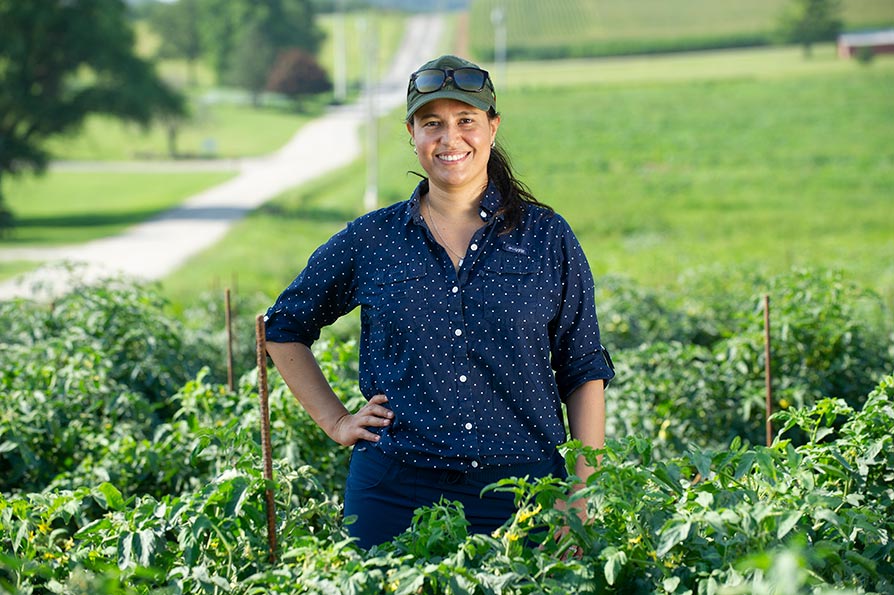Weed And Disease Control In Organic Apple Orchards
Weed Control
Plans for weed control should be in place prior to planting the orchard. Many options have been investigated, and the perfect option remains elusive. Hay mulches and synthetic mulches harbor vole populations, and controlling weeds along edges of synthetic mulches is difficult because mowers snag the mulches. Some burn-down herbicides are approved for use in organic plantings, but these are expensive and must be reapplied frequently. Propane flamers sound like fun for pyromaniacs but are expensive and have proven only marginally effective over the long haul.
Wood chip mulch has provided acceptable weed control without harboring voles, but the transport and installation costs for a wood chip mulch can be substantial. Wood chip mulches must be renewed every several years, and perennial weeds such as Canada thistle can become a problem in wood chip mulches. Wood chip mulches provide some benefits for fertility and moisture retention, but long-term management is more complex than for weed control by tilling. Wood chips should never be tilled into the soil because they will tie up all of the available nitrogen for several years after incorporation. Thus, one cannot mix wood chips and tillage.
An option worth exploring would be a removable and re-usable synthetic mulch. Several companies manufacture durable plastic and/or fiberglass-based ground covers that have worked well to suppress weeds. When left in place during winter, these mulches harbor damaging populations of voles. However, it should be feasible to design a machine that would mechanically install the mulch in spring (perhaps in early May) and then recover that mulch onto a roll in mid-August so that it could be stored until it is reinstalled the next spring. A plastic mulch installer like those used for vegetables might be modified and off-set so that a ground cover could be installed on one side of a tree with the outside edge buried in soil to hold it in place. After installation was completed on both sides of a tree row (with separate 3-foot-wide strips of mulch on each side), the center overlap along the tree row would need to be manually stabilized to resist wind by inserting long wire “staples” into the ground or by weighting the center edge with rocks, wood chip mulch, or a long water-filled hose. Wood chip mulch installed over removable synthetic mulch could presumably be shaken to the ground when the synthetic mulch is removed in fall and then covered over with the synthetic mulch the next year. However, removable synthetic mulches need to be tested experimentally and will become practical only if their installation and removal can be mechanized.
Disease Control
Various plant pathologists working with organic apple production have all agreed that the two most problematic groups of diseases in organic apple production are rust diseases and summer fruit rots. Sulfur and liquid lime-sulfur (LLS) can be used to control most other diseases, although, as noted before, using these fungicides at the rates and intervals needed to control apple scab will cause yield reductions. To date, all of the organic fungicides promoted as alternatives to sulfur are more expensive and less effective than sulfur.
Fire blight is another potential problem with many cultivars, but streptomycin is currently acceptable within organic programs so long at is used only on an as-needed basis. Strategies for fire blight control are therefore similar in organic and conventional orchards.
Cedar apple rust and quince rust are very difficult to control with sulfur. Therefore, organic plantings that include rust-susceptible cultivars should be located at least 300 feet away from the nearest cedar trees. Powdery mildew can become a problem on some cultivars, but three or four applications of sulfur beginning at petal fall may suffice to keep mildew in check. Where mildew becomes established, however, the sulfur program should be initiated no later than pink.
Sooty blotch and flyspeck can be controlled by using low rates of LLS during summer. In trials in New York’s Hudson Valley, LLS applied at 1 quart per 100 gallons of dilute spray was very effective when applied on a 10-day schedule during July and August, whereas 2 quarts per 100 gallons were required for good control on a 20-day schedule. In regions where conditions favor development of flyspeck and sooty blotch, sprays with LLS must be continued into late September to prevent disease on late-maturing cultivars.
Unfortunately, LLS does not control summer fruit rots such as black rot, white rot, and bitter rot. Low rates of copper fungicide can be tank-mixed with LLS during late July and August LLS to increase activity of these sprays against summer fruit rots. However, organic apple growers may need to resort to sanitation measures to control summer fruit decays as plantings mature. In the northeast, much of the inoculum for summer fruit decays comes from fruitlet mummies that are retained after fruit set and that remain on the trees over winter. Manually removing all of these fruitlet mummies during winter pruning should significantly reduce problems with summer fruit rots. However, as is the case with many other aspects of organic production, that hypothesis has not yet been tested.










